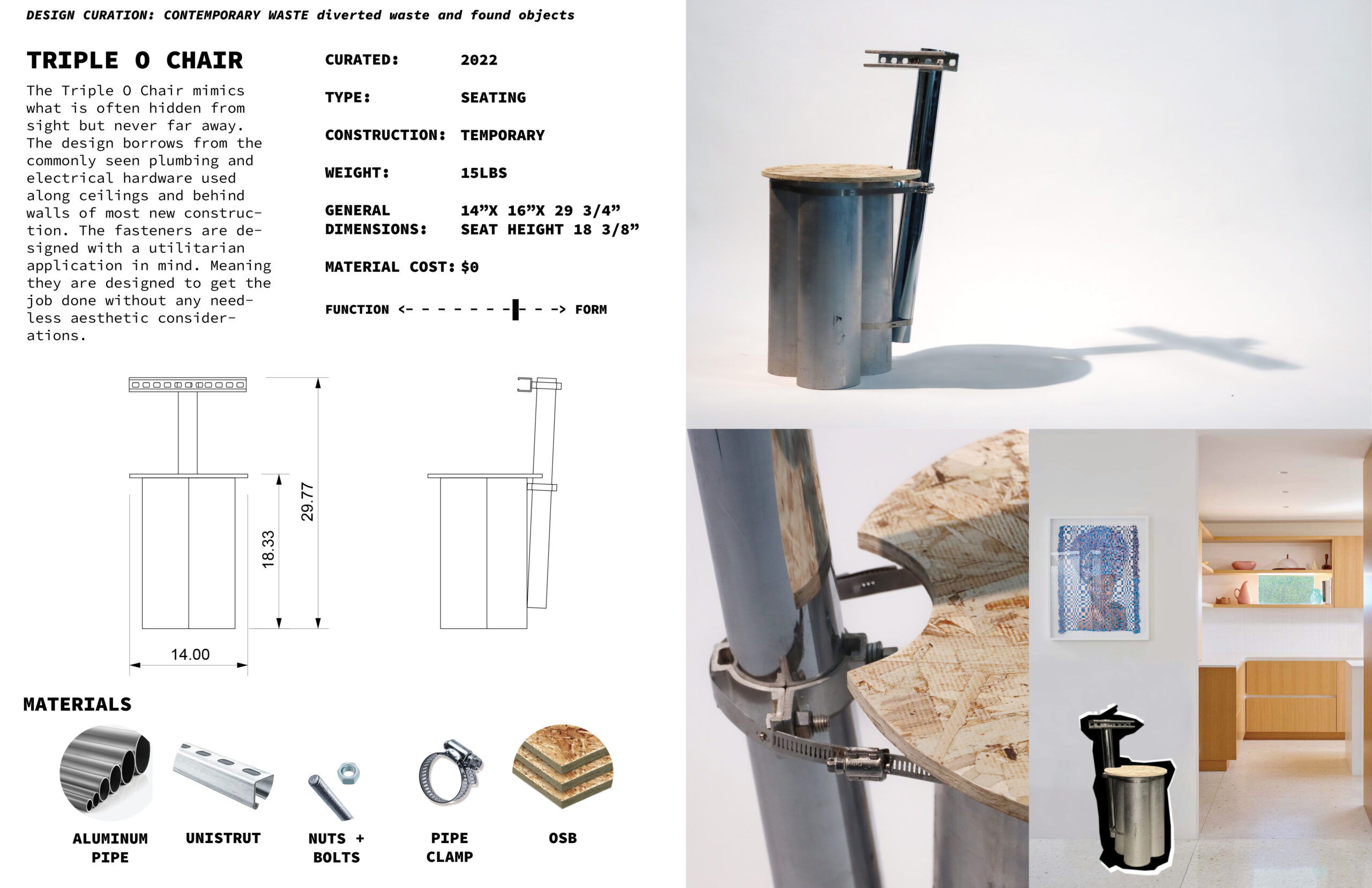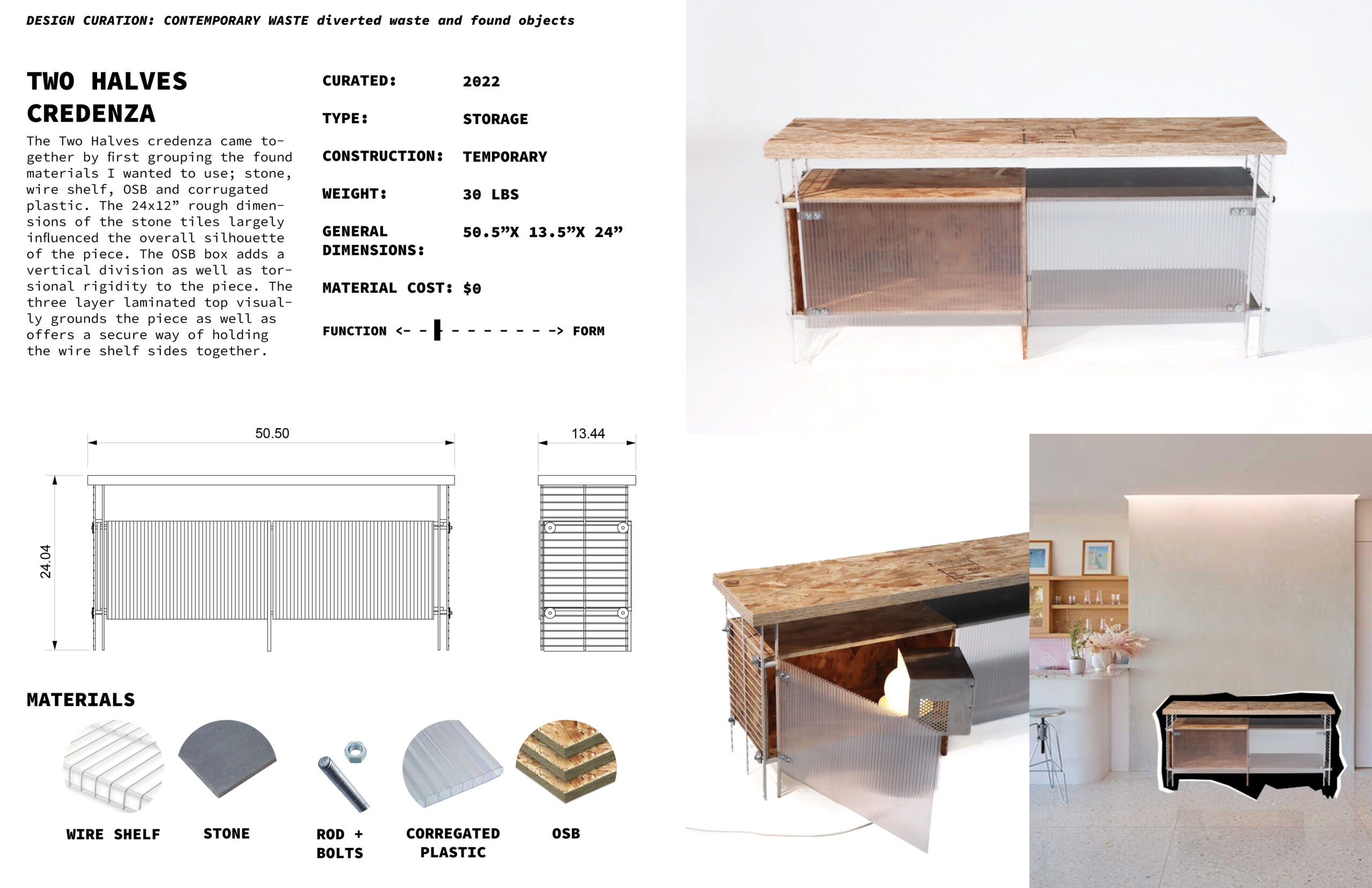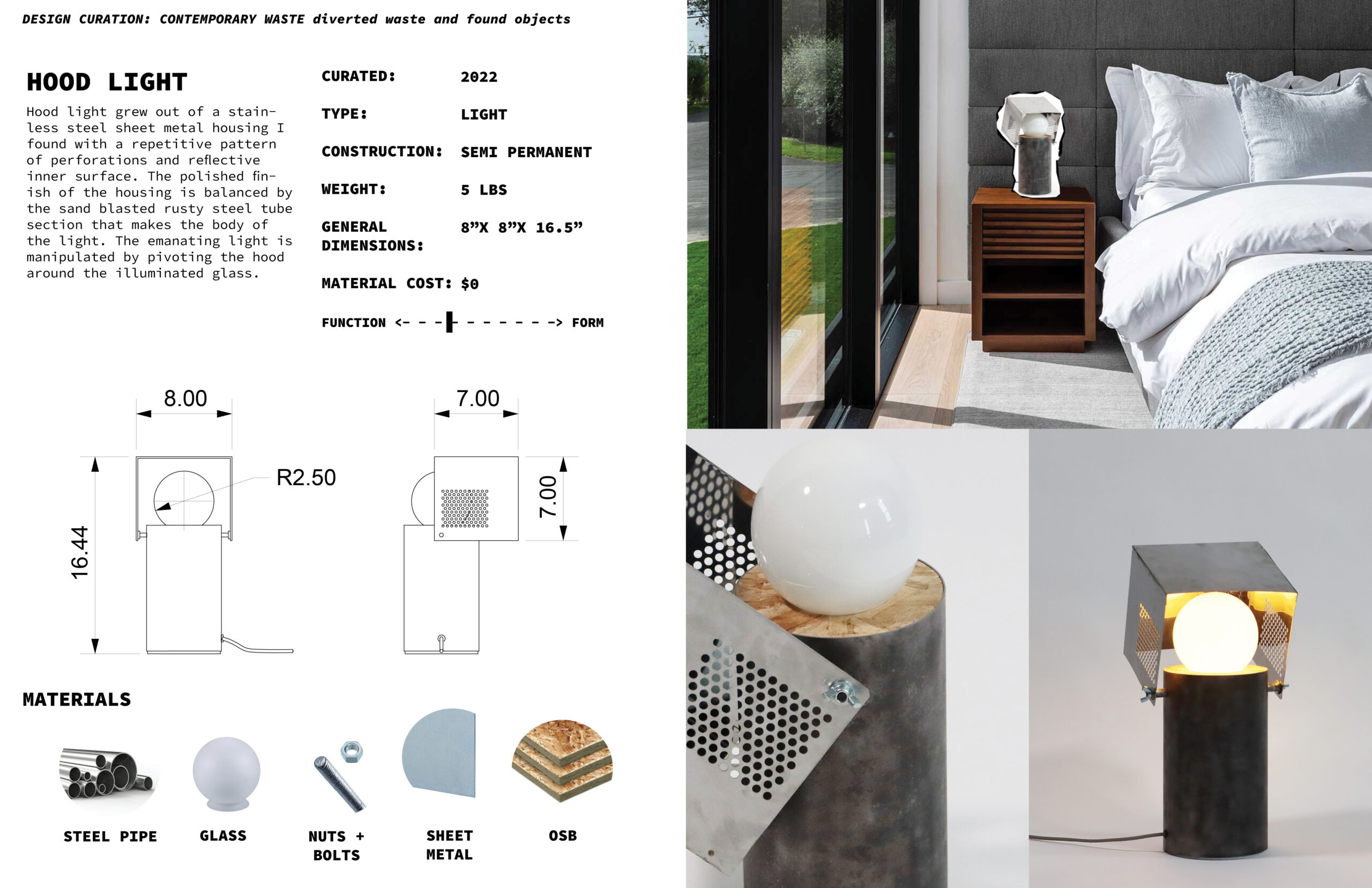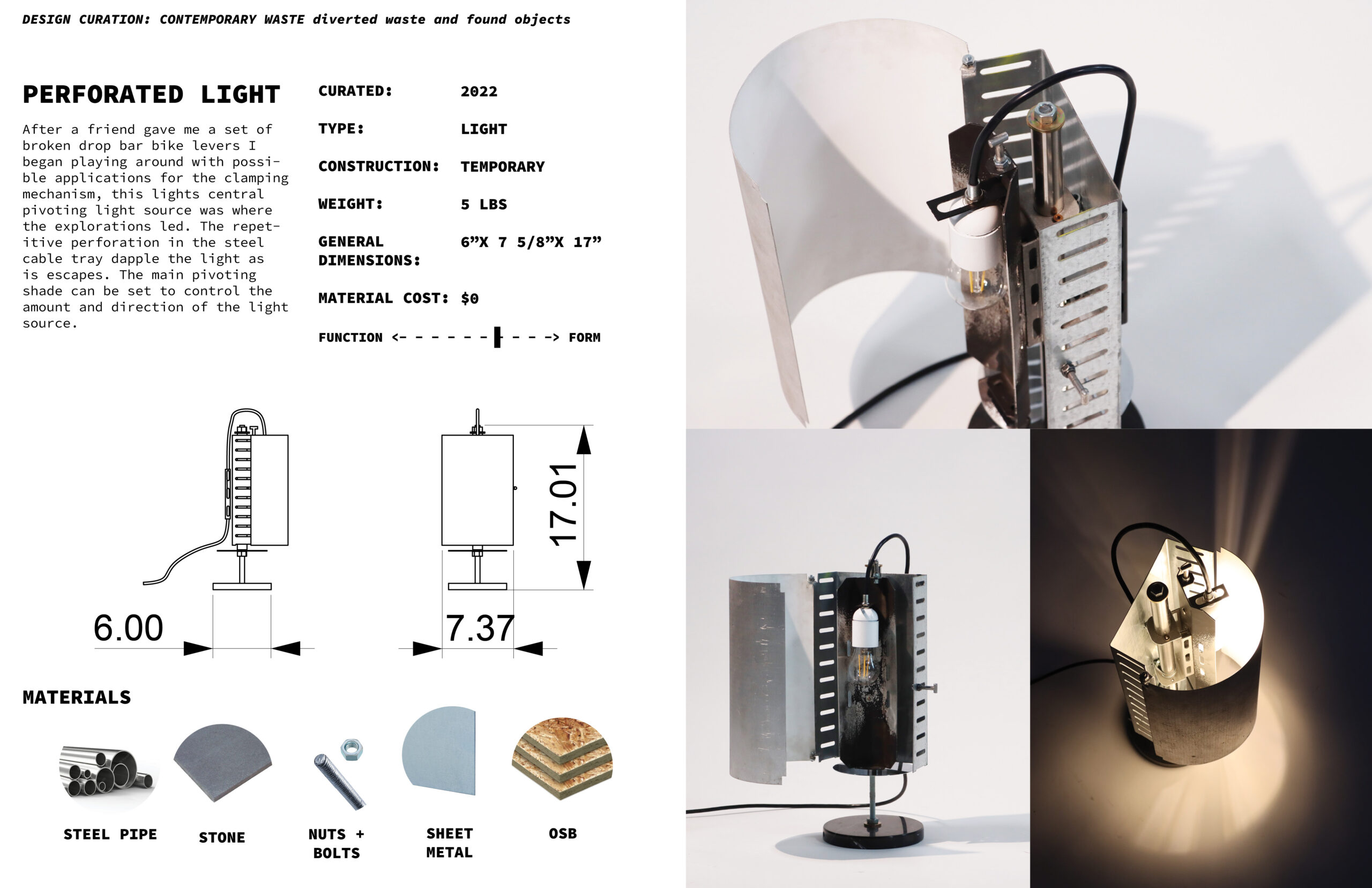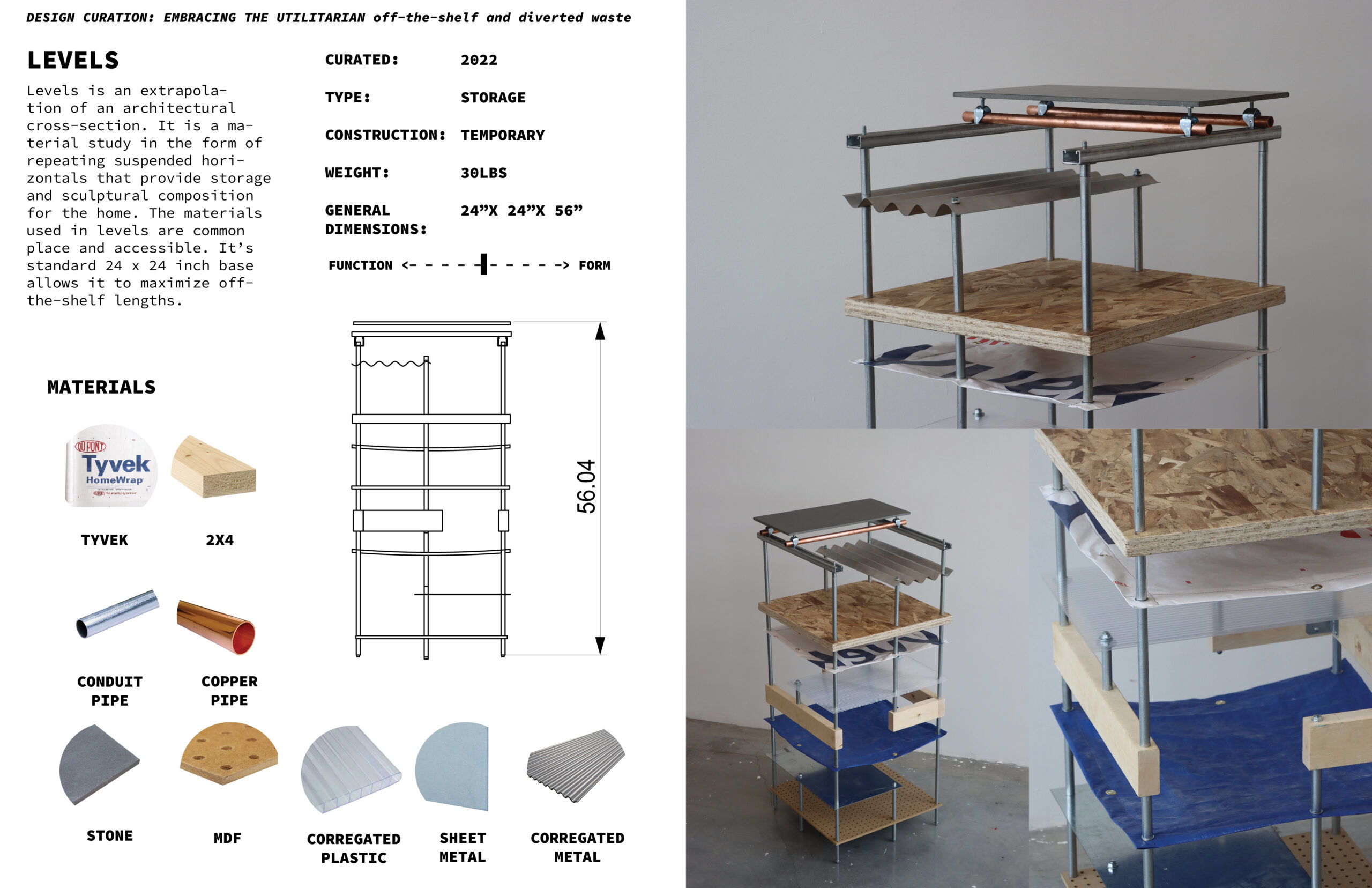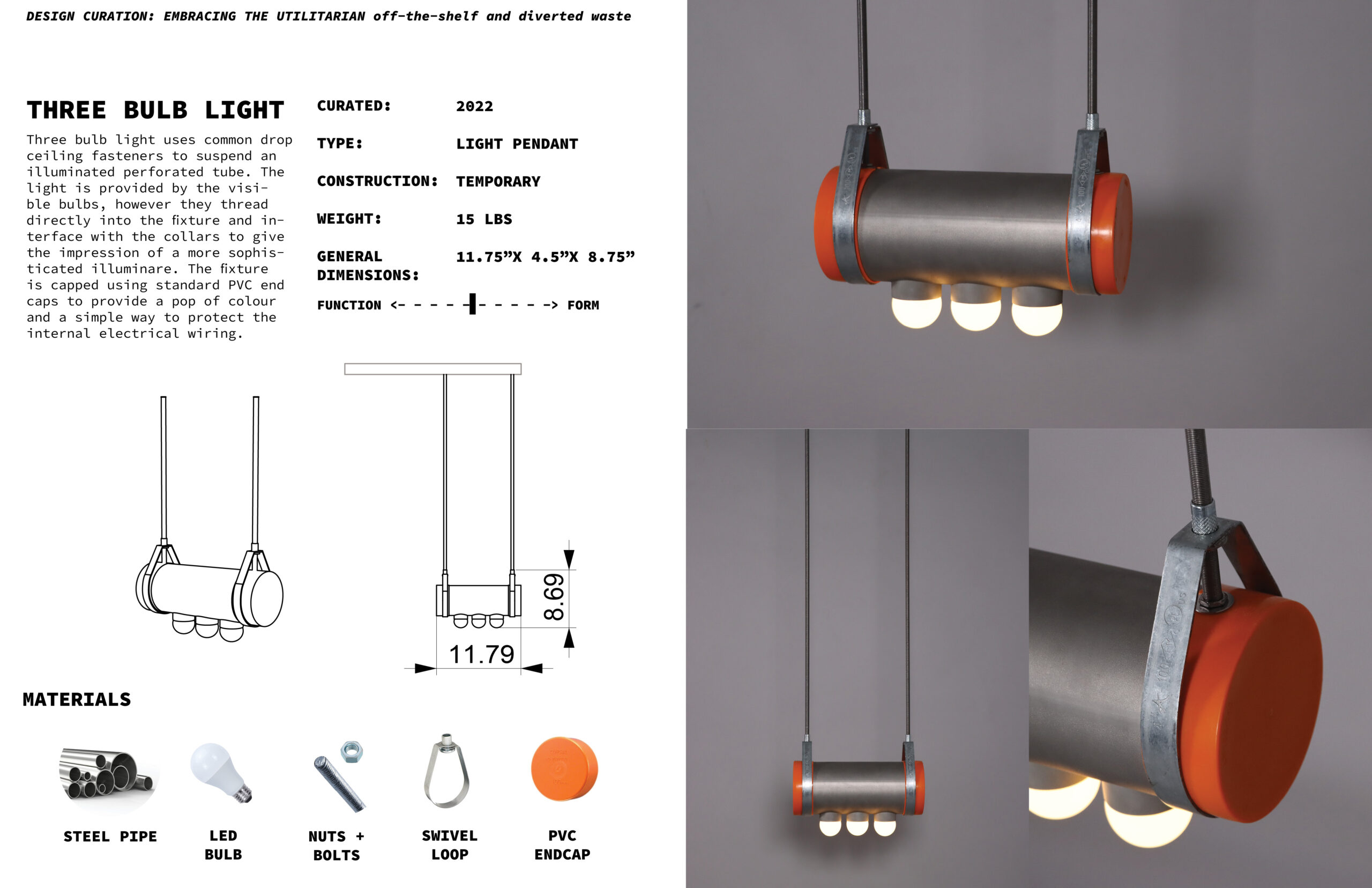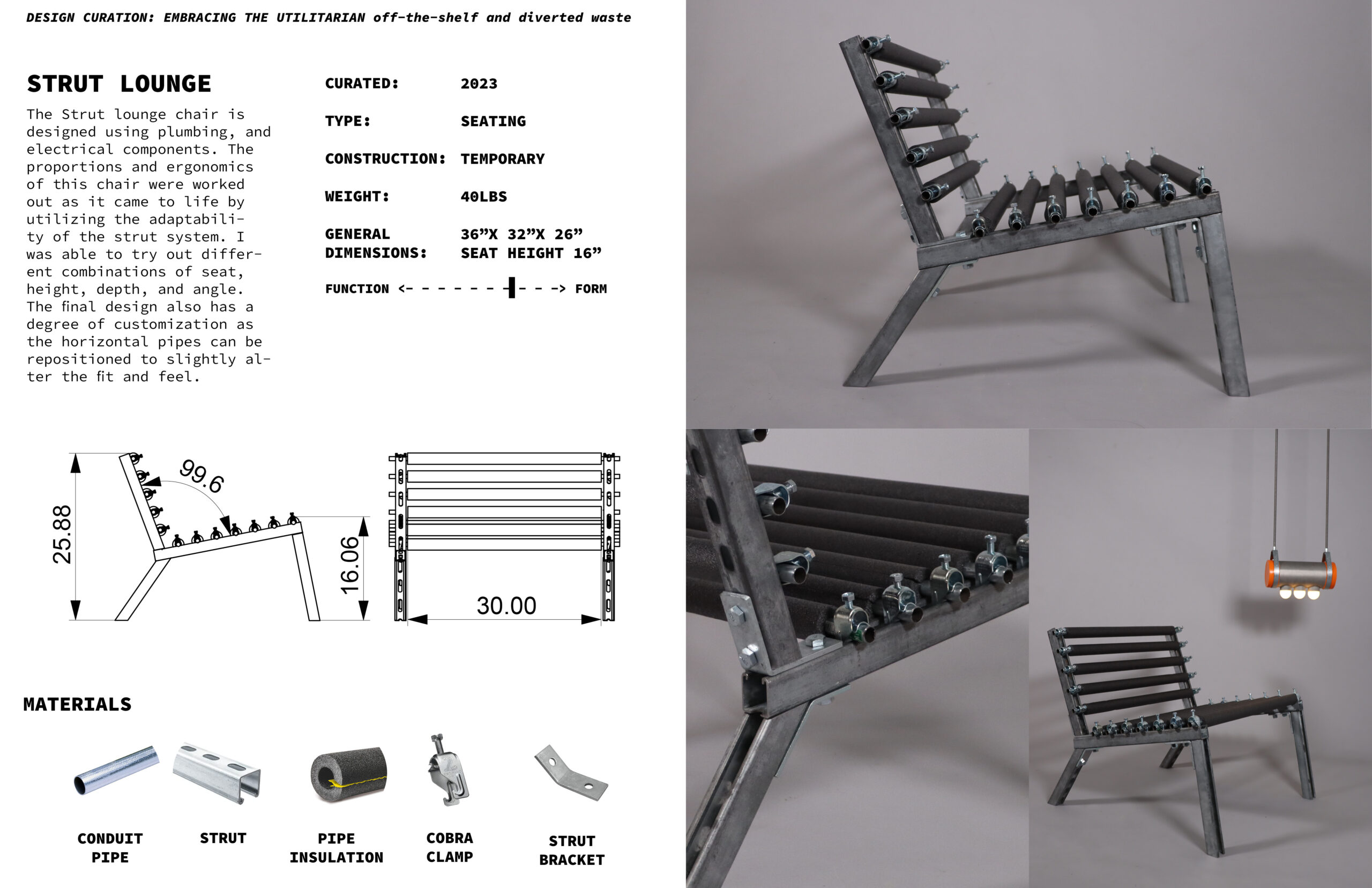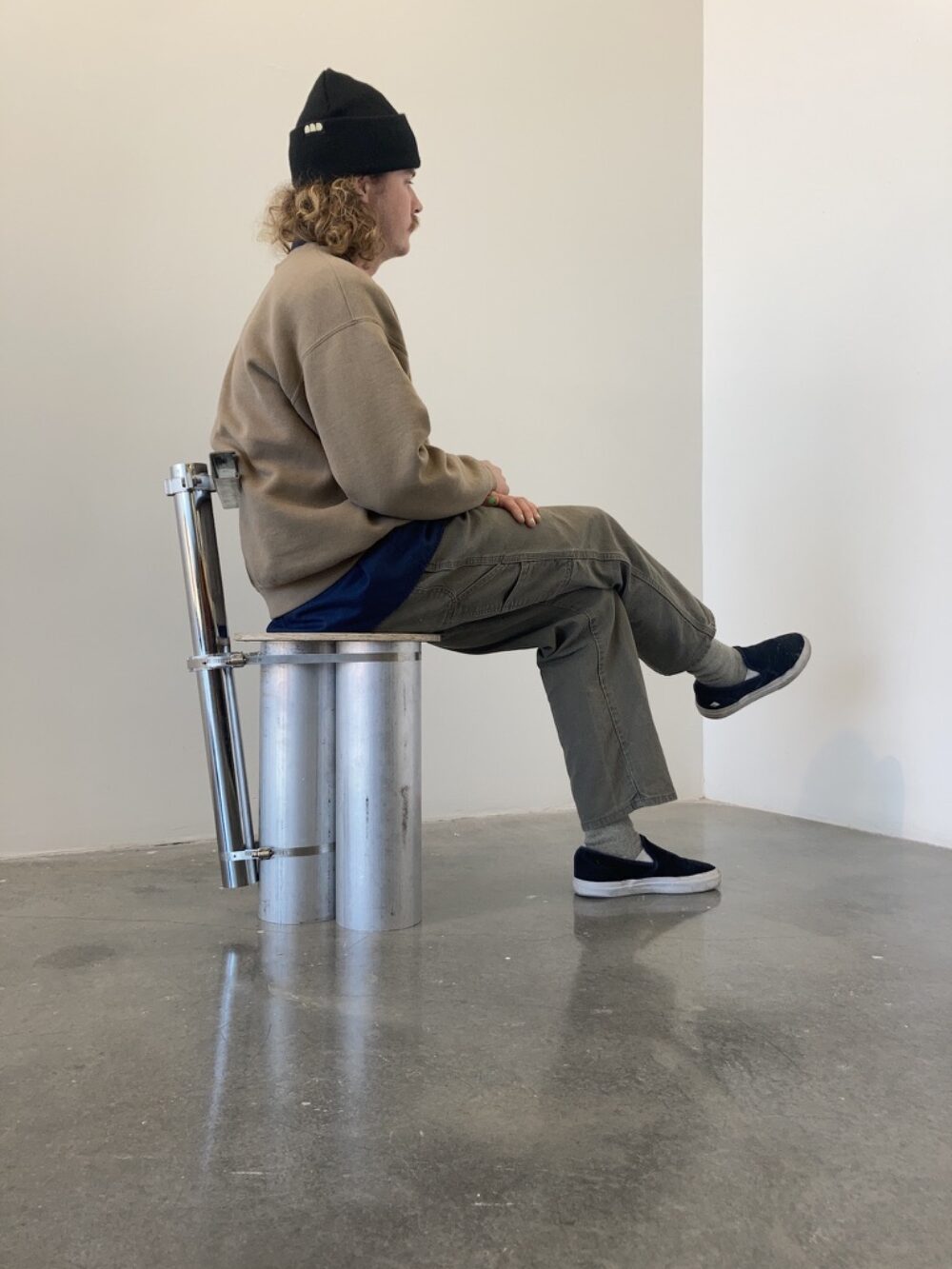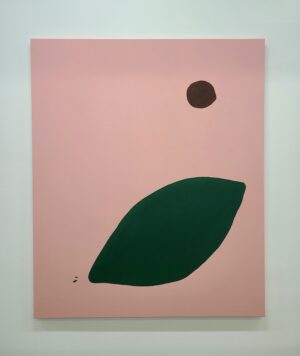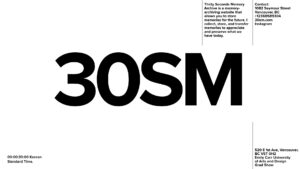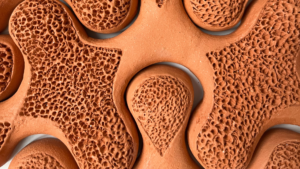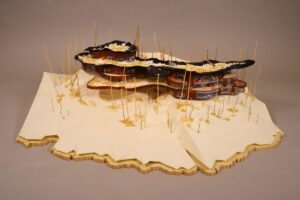Design Curation: Embracing the Utilitarian
Nolan Talbot-Kelly
See it On Campus: Level 2
Visitor InfoInstallation just past the Libby Leshhold gallery on the left. Enter through main entrance (south west).
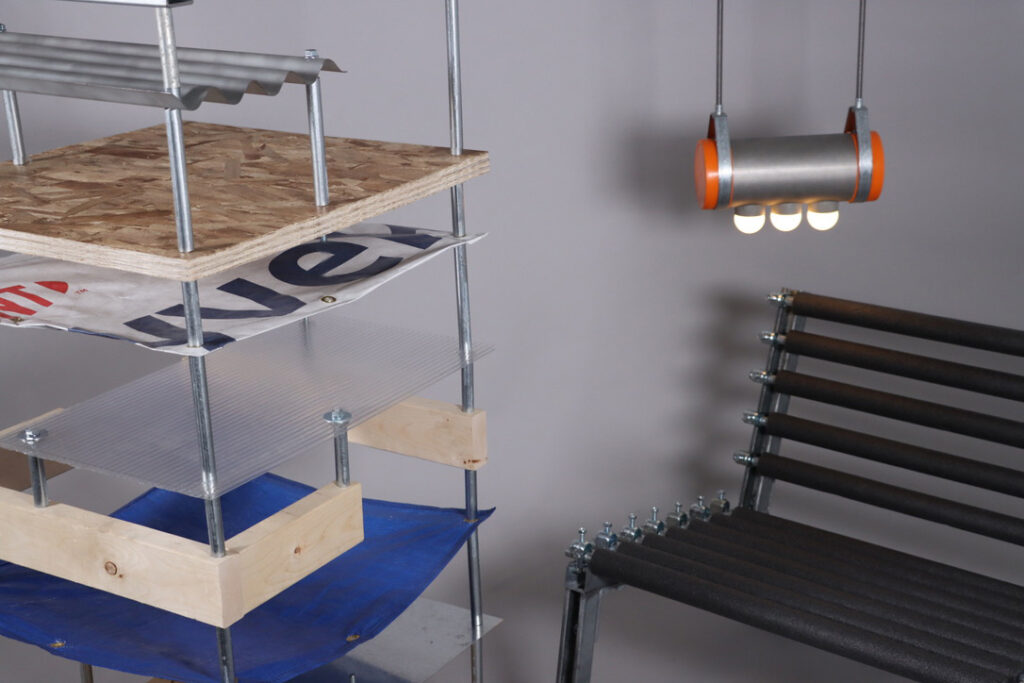
Design Curation: Embracing the Utilitarian is a series of propositional objects that explore how alternative modes of designing and production can challenge our culture of excess. Each work represents physical research into how both self imposed and outside limitations dictate possible design outcomes.
The overarching rules that lead this practice are as follows:
- Design with what already exists and is readily available; use found objects, diverted waste or off-the-shelf components
- Alter the materials minimally; embrace the narrative of the material’s past or imagined lives.
- Design for technical transparency show how things come together so others can replicate.
- Design for disassembly ensure the pieces can be assembled and disassembled using only a wrench.
- Design for disassembly ensure the pieces can be assembled and disassembled using only a wrench.
These rules are followed as closely as possible. Other parameters are more transient, imposed and followed until no longer necessary, in which case they are bent or abandoned all together. The role of the designer is to choose when to follow or abandon the rules.
The values that inform this practice illustrate a mode of designing that prioritizes resourcefulness and intuition while aiming to evolve the perceived value of objects.
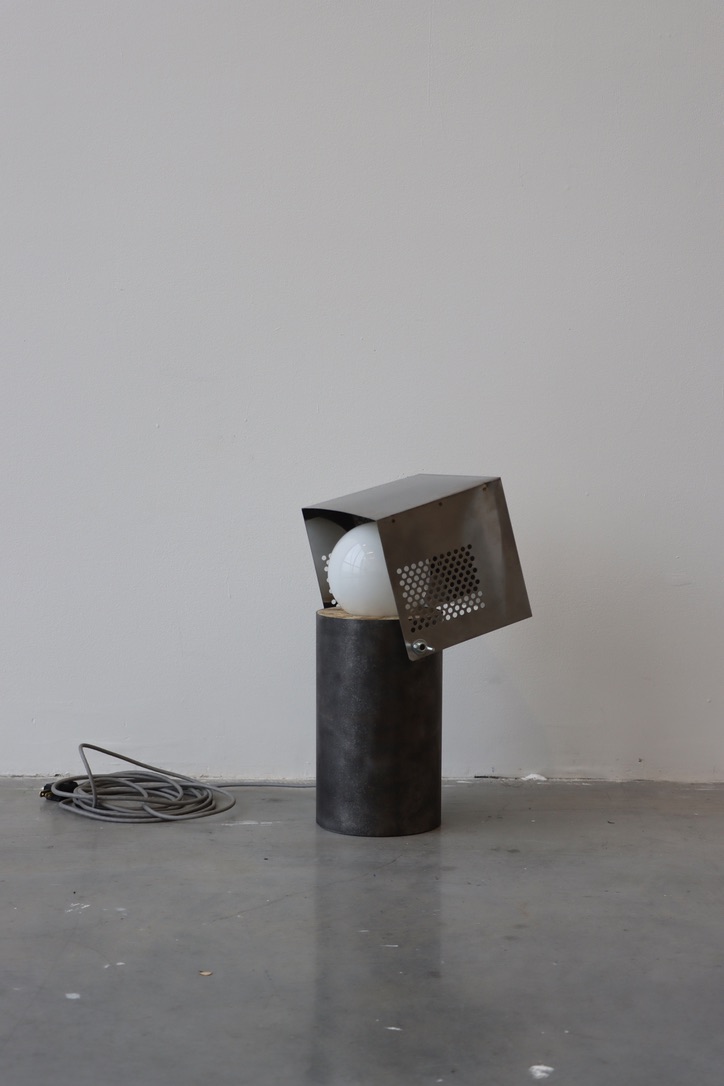

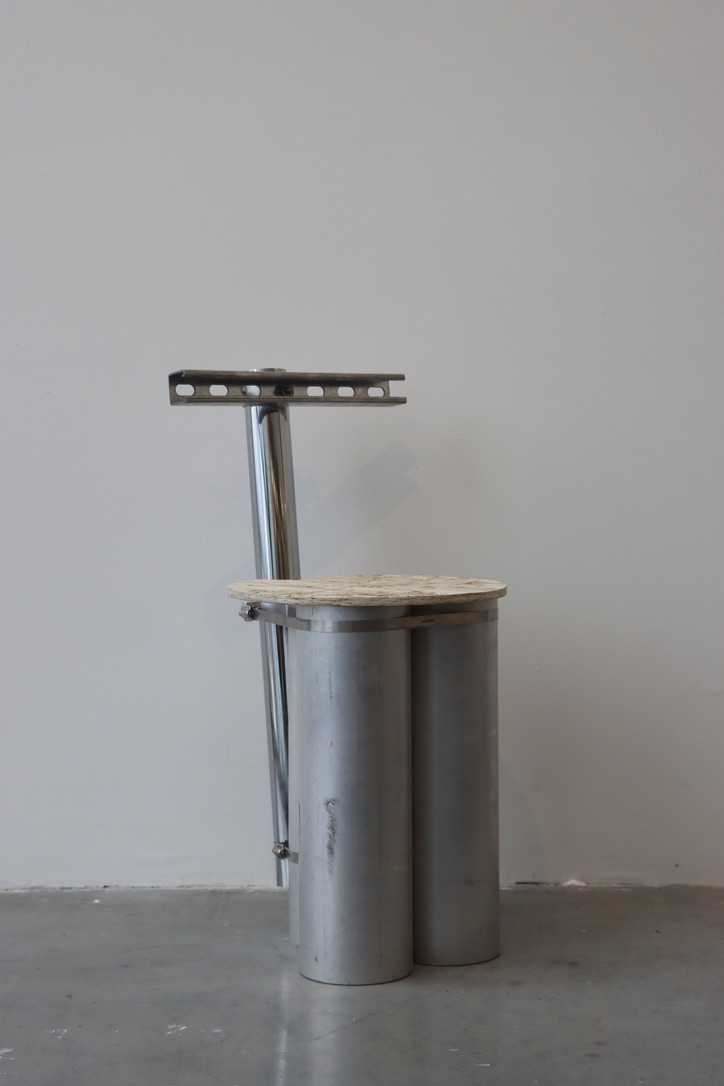

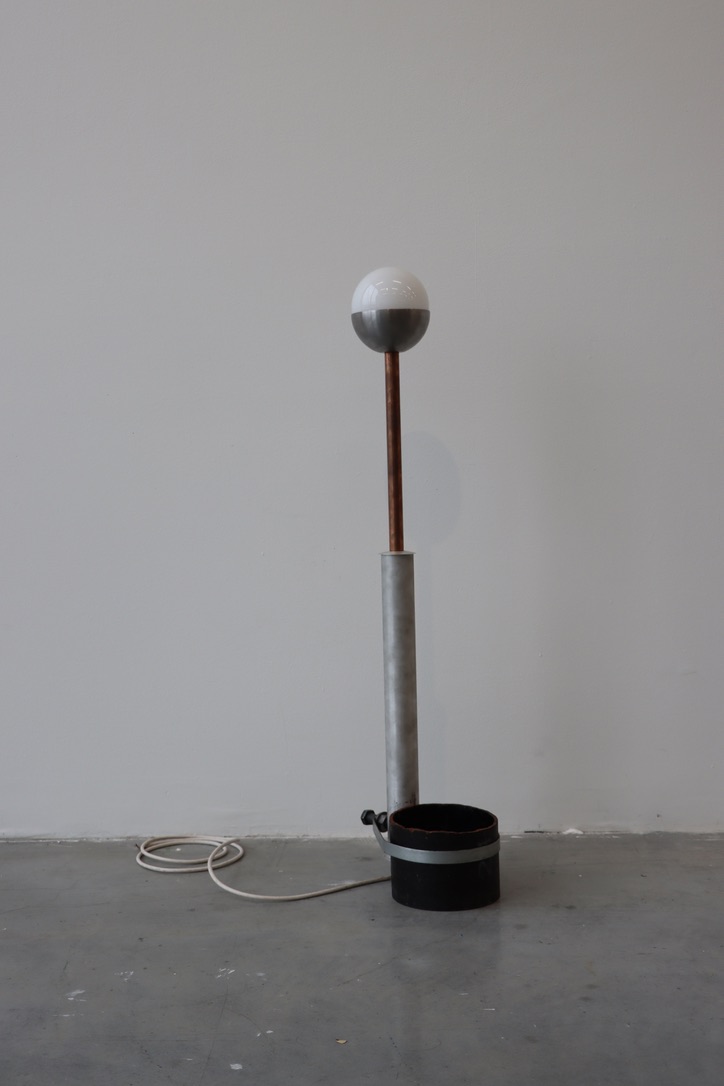
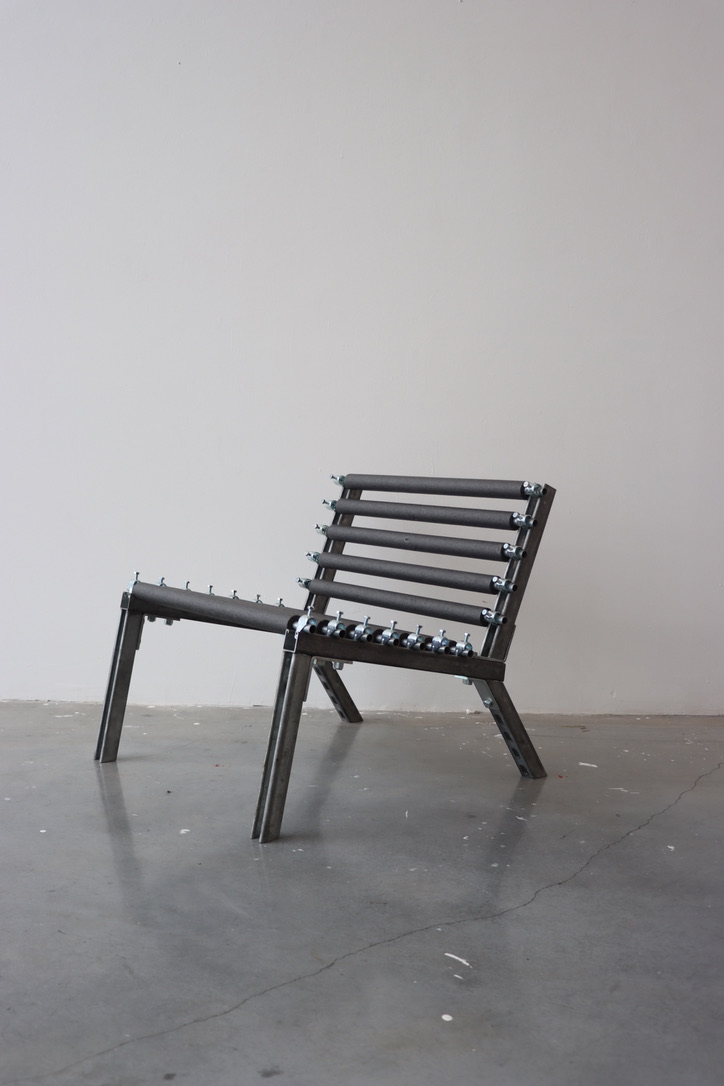

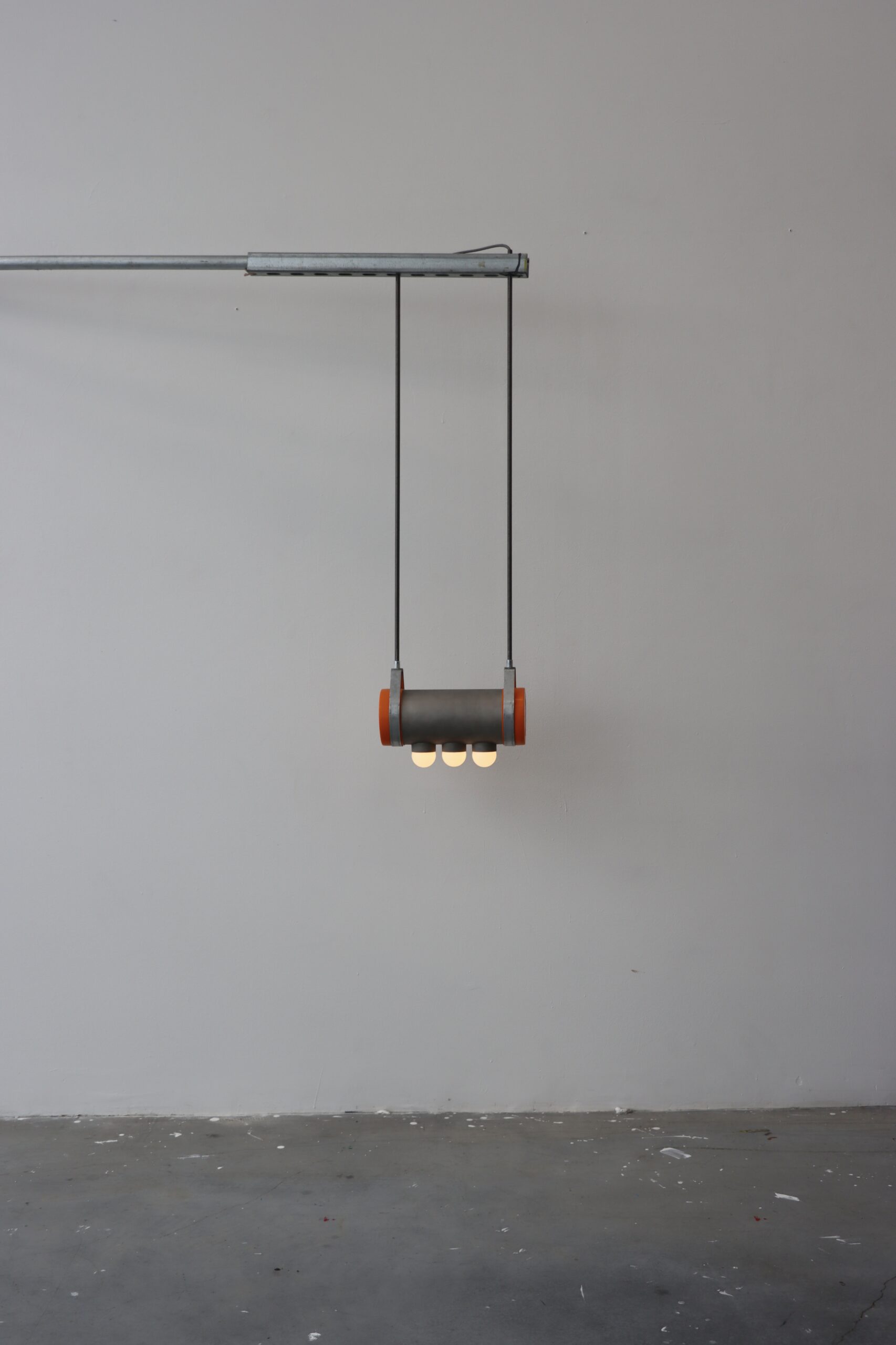
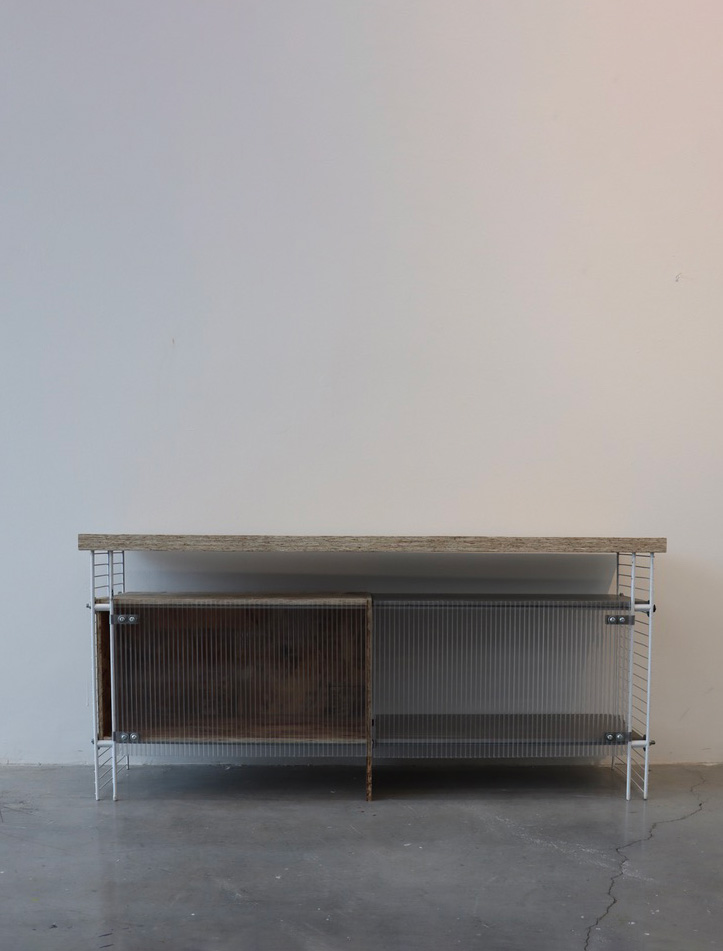
Tear Sheets
